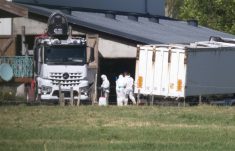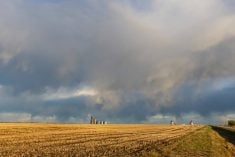A program to help rain-soaked Saskatchewan livestock producers move feed to livestock, move livestock to feed or reseed ruined hay, forage or pasture land will be topped up to help cover the bills for the feed itself.
The federal and provincial governments on Tuesday announced joint AgriRecovery funding to be flowed through the province’s Feed and Forage Program (SFFP), adding up to $30 per ton for eligible producers to buy feed for their livestock.
Producers who own or lease, custom-graze or custom-feed breeding livestock can submit applications for the new feed shortfall assistance, which is subject to a 10 per cent deductible.
Read Also

U.S. livestock: Cattle fall sharply as Trump says he’s working to lower beef costs
Chicago cattle futures fell sharply on Friday after U.S. President Donald Trump said his administration was working to lower the…
Eligible breeding livestock include beef and dairy cattle, bison, elk, horses, sheep, goats, deer, reindeer, caribou, llamas and alpacas held in inventory as of Oct. 1, 2010.
“Last year brought record rainfall to many parts of the province and created challenges for many producers,” David Marit, president of the Saskatchewan Association of Rural Municipalities and a councillor from the southern RM of Willow Bunch, said in the province’s release.
The added federal and provincial funding “will help producers affected by excess moisture to access feed for their livestock this winter,” Marit said.
Producers have until April 30, 2011 to submit feed shortfall assistance applications for purchases made between June 1, 2010 and March 31, 2011.
Hay, silage, greenfeed, straw, feed grain, pelleted screenings, screenings, distiller’s grain, canola meal, soybean meal, and complete rations are eligible, as long as the feed is purchased due to a shortfall caused by excess moisture conditions in 2010.
The added funding won’t change the maximum amount of SFFP funding an applicant can receive. An applicant taking part in any or all of the SFFP’s components, including the feed shortfall, feed/livestock transportation and forage reseeding assistance components, can claim up to $50,000 for all components combined.
Producers, the province said, can apply for any or all of the components “separately and as many times as you need to,” up to the $50,000 maximum.
Applicants for the feed shortfall funding must not have received or be receiving funding from the Provincial Disaster Assistance Program (PDAP) for purchase (nor transport) of the same feed.
Feed for non-breeding stock of all species — for example, feeders, open heifers, calves, geldings, steers or other animals of non-breeding age — is not eligible.
The deadline for application forms for the SFFP’s other components remains Sept. 30, 2011.















